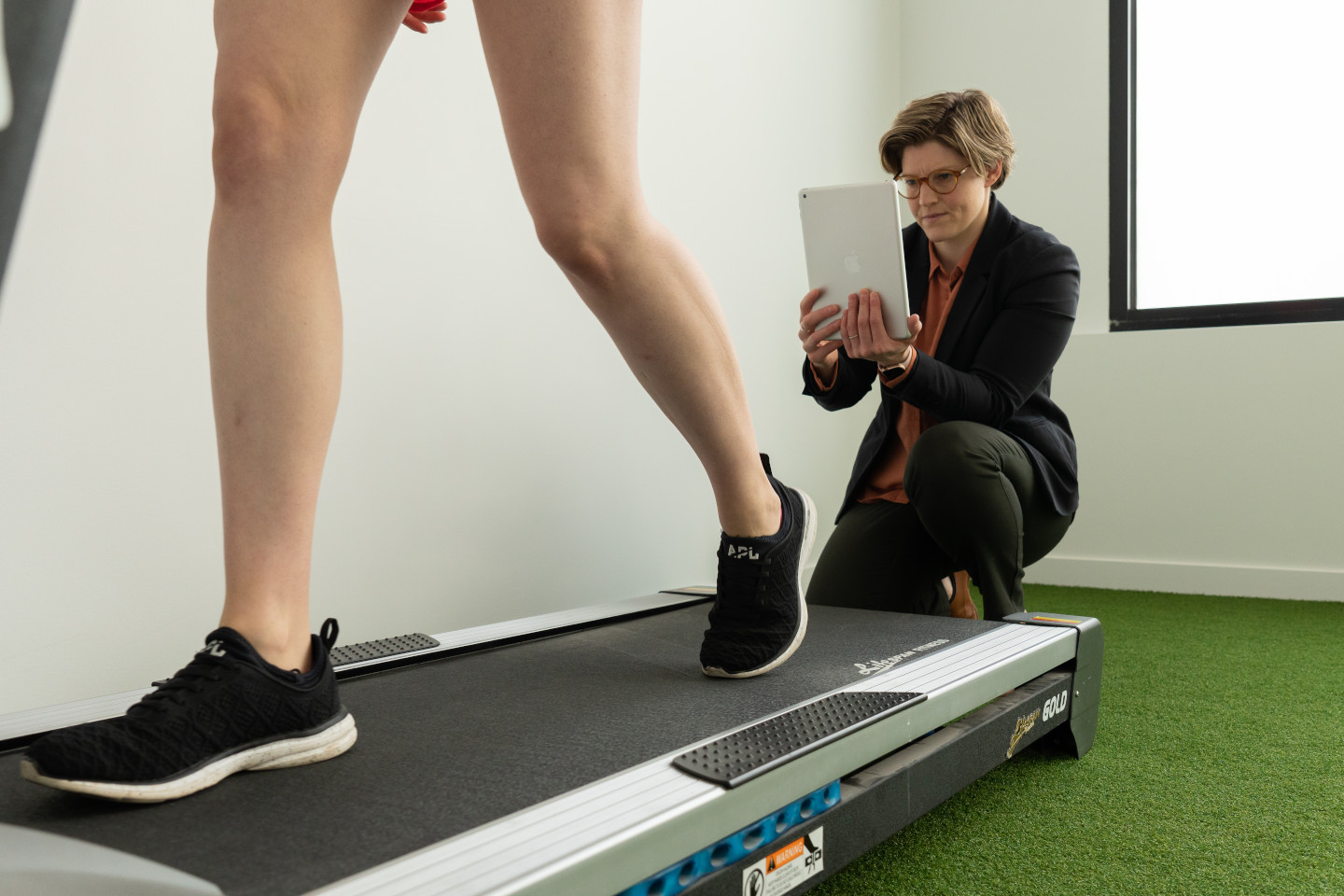FES Services
Functional Electrical Stimulation (FES) applies low-level electrical impulses to weakened, damaged or paralysed muscles to help improve people’s capability and mobility.
At Orthotics Plus, the FES devices we use for our Melbourne patients, are clinically proven to improve walking speed, safety, walking symmetry, and confidence.

Watch an Inspiring Video!
What Conditions May Benefit from FES?
We use Functional Electrical Stimulation (FES) devices to help patients suffering from foot drop, lower limb muscle weakness and upper limb muscle weakness due to the following conditions:
- Stroke
- Multiple sclerosis
- Acquired brain injury
- Incomplete spinal cord injury
- Cerebral Palsy
Orthotics Plus works with all people and age groups, we welcome enquiries from everyone.
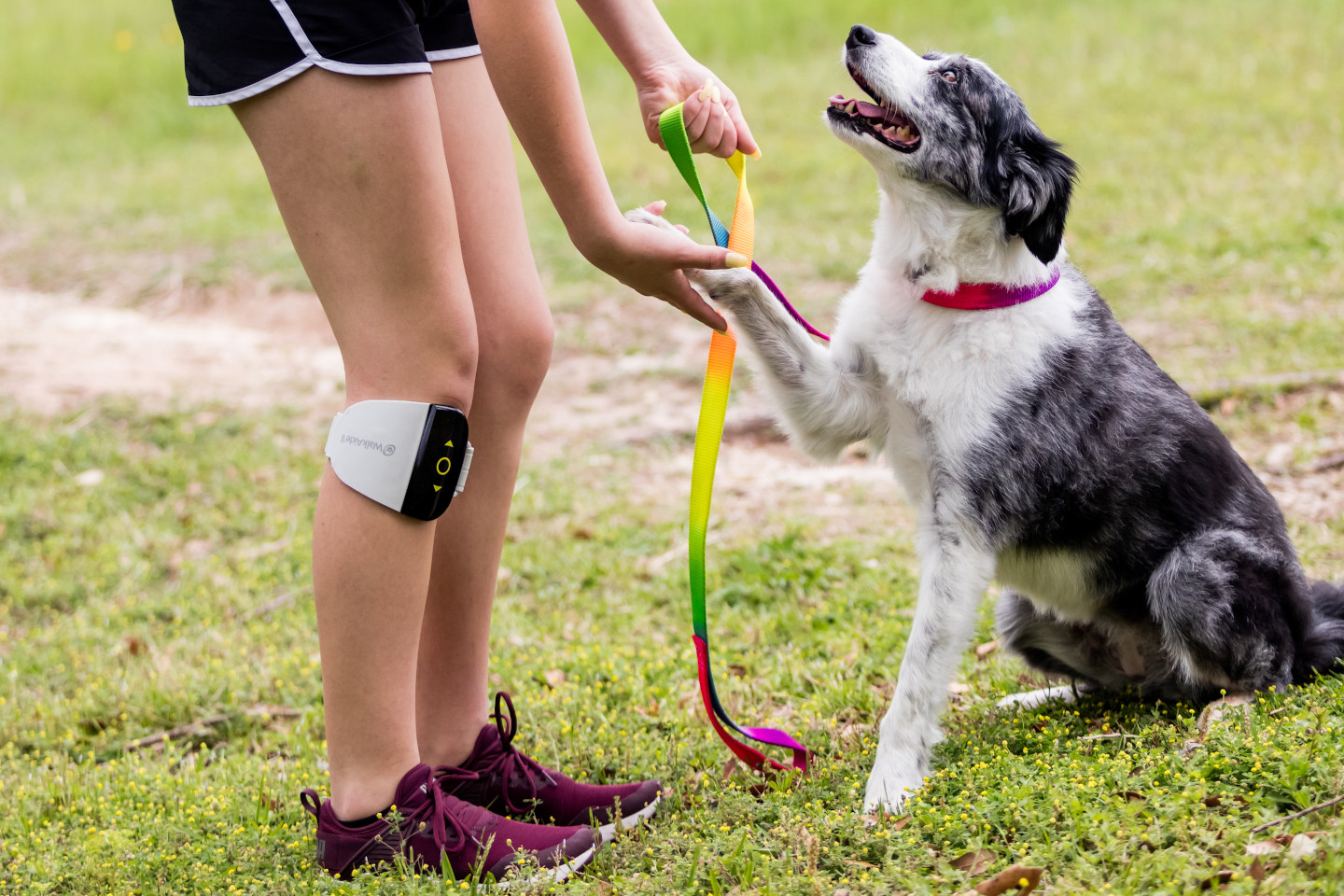
Electrical Muscle Stimulation Results
The ideal outcome is that people:
- Walk with more speed, stability and confidence
- Improved balance and decreased risk of trips and falls
- Increase muscle strength and endurance
- Reduced tightness and muscle cramping
- Exercise at home or outside the rehabilitation centre
- Assist hand and finger movements
- Increase joint motion and blood flow
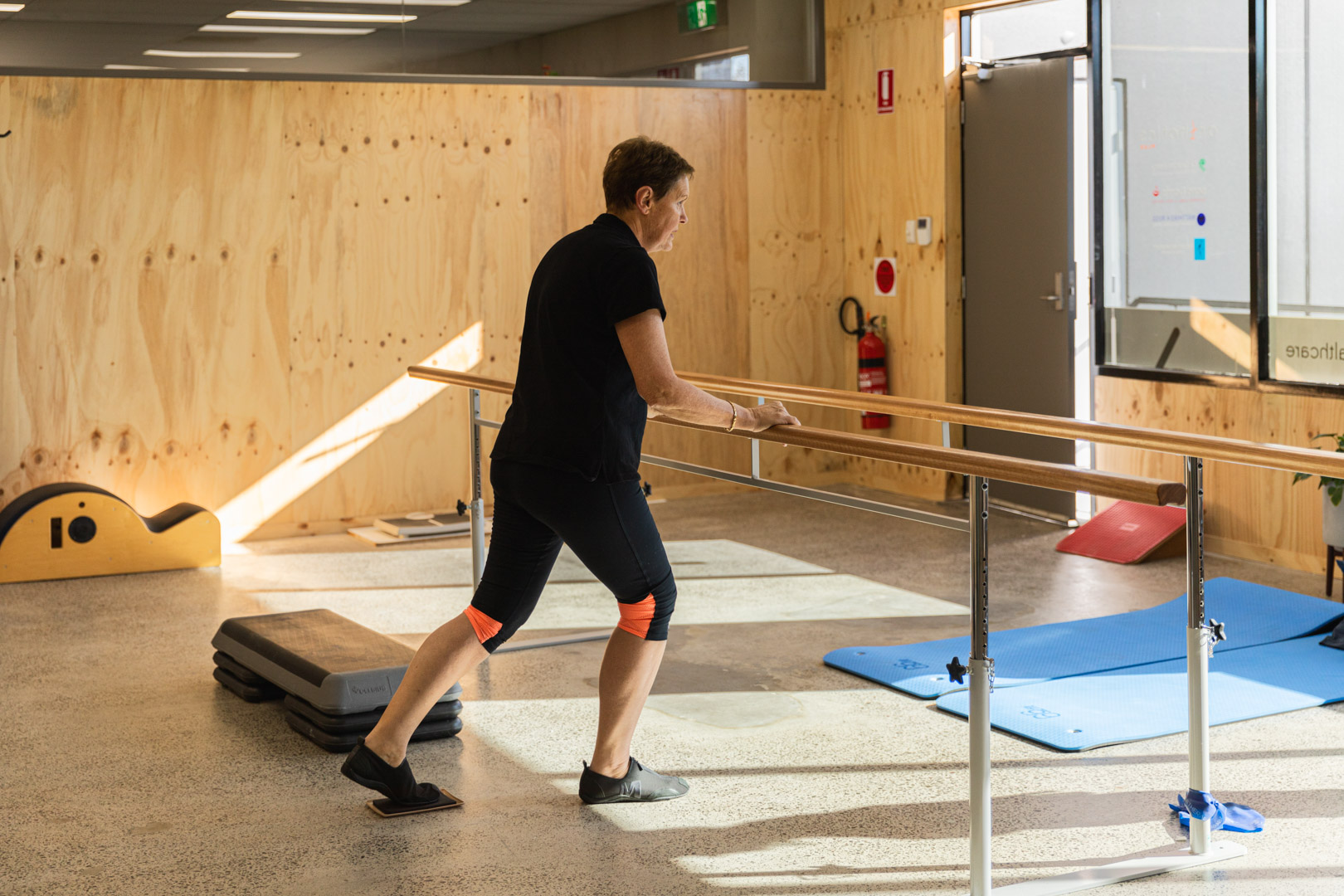
FES System Comparison – A Clinician’s Perspective
Orthotics Plus’ senior orthotists have reviewed the currently available Functional Electrical Stimulation (FES) systems in Australia.
This is to assist in your research and decision making.
Our opinions and findings below are not meant to be a replacement for a consultation and assessment.
There are aspects of every individual presentation that will always require professional consultation.
How it Works
FES uses electrical impulses to stimulate nerves to cause a muscular contraction. In a foot drop device, it focuses on the muscles to lift the foot (dorsi-flexors) and the muscles that turn the foot out (evertors) to create a natural walking pattern.
Show more
Comparisons with AFOs
Aside from the technology replacing the traditional static Ankle Foot Orthosis (AFO), the other benefits include strengthening and lengthening of disused and contracted muscles, improved blood flow, improved proprioception, improved gait symmetry and reduced energy expenditure. It also means not having to wear shoes all the time as you have to with a traditional AFO.
Example case treating foot drop
Foot drop is a common physical condition that refers to difficulty in lifting the front part of the foot towards the shin (dorsiflexion). Foot drop causes patients to drag or catch their foot on the ground when walking, leaving them susceptible to falling and physical harm and having to compensate with a variety of gait deviations.
In order to treat this, a Functional Electrical Stimulation (FES) device will sense when the patient is lifting their foot from the ground and stimulate the common peroneal nerve to activate the muscles which generate lift (dorsiflexion) at the ankle.
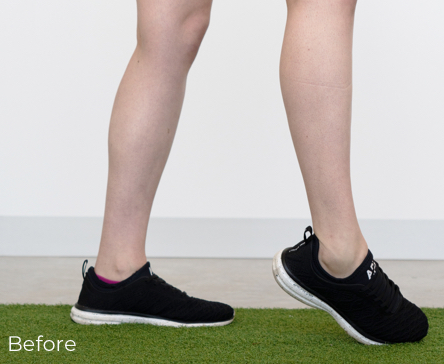

Show less

FES Devices Available at Orthotics Plus
There are currently 3 companies providing FES lower limb gait devices in Australia:
Innovative NeuroTronics
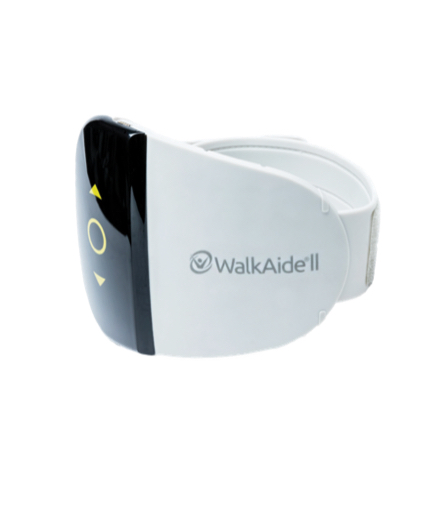
Innovative NeuroTronics produce the original WalkAide and have recently introduced the WalkAide 2.
WalkAide is a mid-priced and very solidly performing unit.
Both WalkAide units are based on accelerometer technology which is ideal for walking on straight flat surfaces, but without gyroscopic technology it is less effective for actions such as side stepping or walking on uneven terrain.
Show more
They are both single channel units.
The new WalkAide 2 is a simplified model, sleek and streamline with its traditional gel electrodes replaced with a metal contact surface that does not require regular electrode replacement. However the options to fine tune are not as broad as the original WalkAide.
There is an exercise mode to encourage strengthening, stretching and vascular flow when at rest.
Show less
Bioness
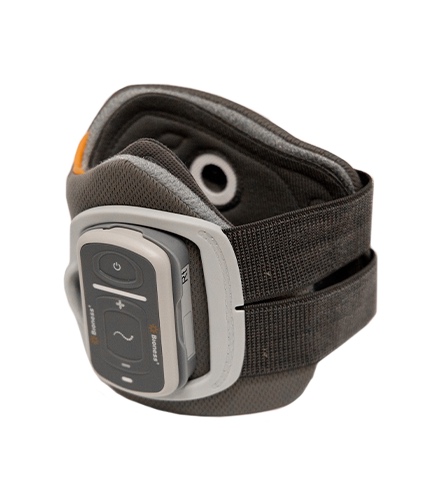
Bioness have 2 models of lower limb FES units. The L100-GO and the recently released L300-GO.
The L100-GO is the simplified model of the Bioness range and as such is cheaper.
It is a single channel unit and has an optional footplate for greater refinement of gait.
Learn more about the Bioness FES.
Show more
The L300-GO, is arguably the top of the line of all FES units currently available and also carries the highest price tag. It has multi-channel electrode options, does not require a footplate to get finer gait adjustments due to its gyroscopic technology, and has an option (at an additional cost) for a knee stabilising thigh cuff attachment – which can be used for quadriceps or hamstrings stimulation. This thigh cuff is functional without the lower leg unit if there is no footdrop presentation. Importantly, it offers the largest range of options for a customised positioning of electrodes and level of stimulus to offer the most flexibility for varying individual anatomies and presentation.
We find the Bioness system to be the most responsive unit for people taking sidesteps, walking backwards and performing atypical steps that cheaper units may not be capable of correctly interpreting. This can be an important feature for safety and specific activities. The Bioness system is also able to be controlled by an app on the patient’s phone.
Training modes are available with both Bioness devices which can build strength and endurance and improve blood flow in the affected muscle groups when at rest.
Show less
Medical XFT
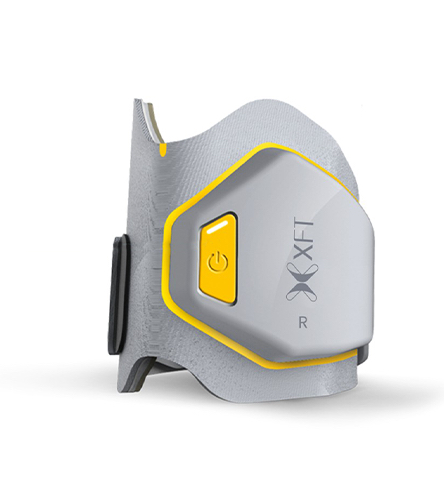
XFT-2001D G3 is currently the lowest cost device and in the 3 rd generation of its development.
It is a single channel unit. It has a metal contact plate instead of gel or cloth electrodes, although there is an option for a different cuff with gel electrodes.
The XFT system may be useful for patients requiring a low cost, sleek and streamlined device and who walk with mostly regular gait.
Starting with Orthotics Plus
Clients do not require a referral to get started with Orthotics Plus. We do, however, often have patients who are referred to us by their GP.
When requiring a FES, details of an existing diagnosis from a doctor, surgeon or specialist are helpful.
- We are Australian owned
- We have multiple clinics throughout Melbourne
- We are kind and caring
To contact us, please use one of the buttons below.
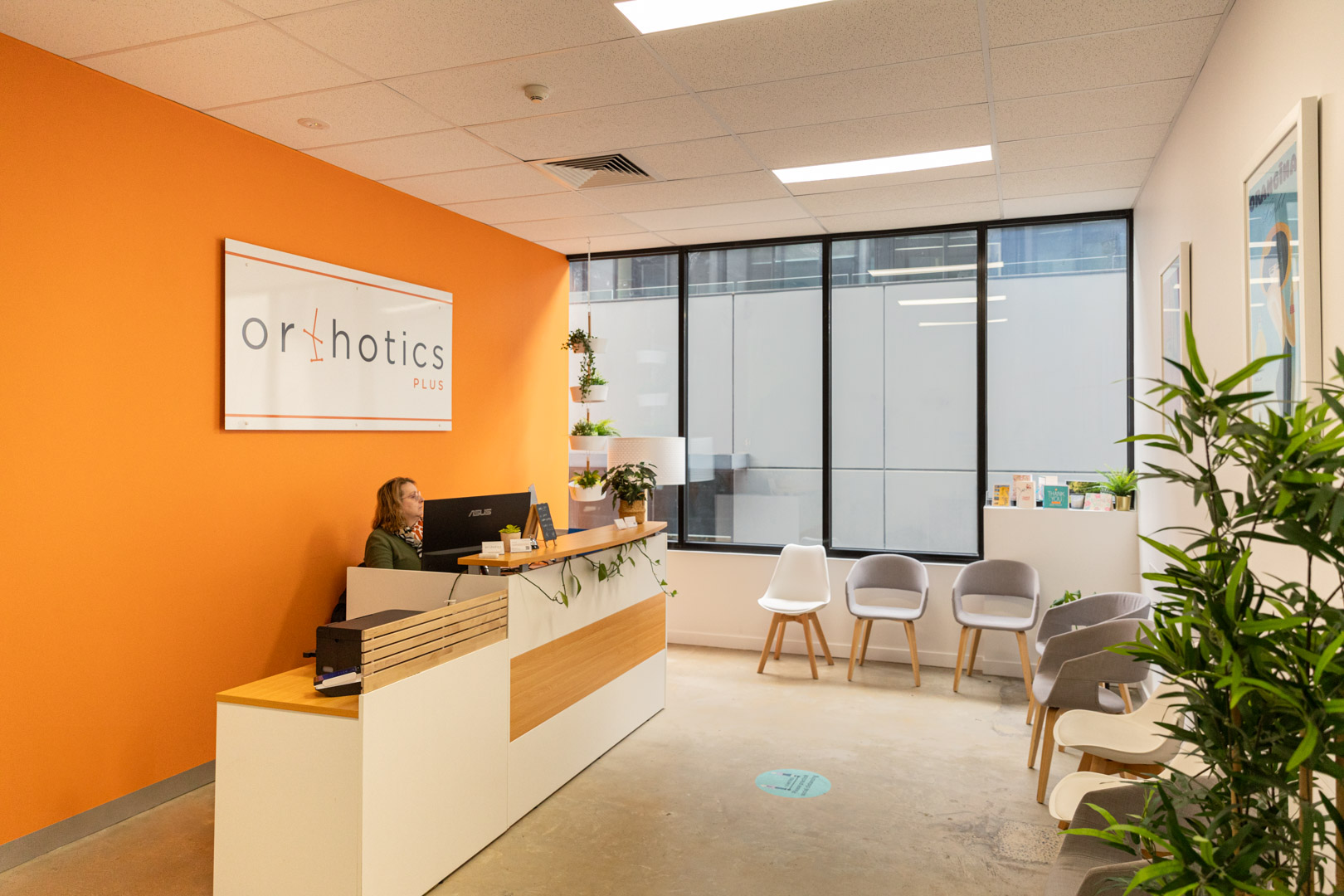
20 Questions About the FES
The human body naturally uses small electrical impulses to cause muscles to move. If the body is unable to generate or transmit this nerve signal from the brain to the desired muscle, then the muscle will be unable to move.
FES (functional electrical stimulation) devices are technology which generates muscle movement at a desired area by directly transmitting a low-level electrical impulse to the nerve, activating the
muscle.
For a person unable to move a muscle due to injury or a condition which has affected the central nervous system, FES devices can be used to compensate for this deficit
These devices are wearable, battery-powered and specifically target a muscle or muscle group at a specific time to increase function.
An example of this is an FES device for foot drop. The device will sense when the patient is lifting their foot from the ground and stimulate the common peroneal nerve to activate the muscles which generate lift (dorsiflexion) at the ankle.
Depending on position and tuning of the device we can also
adjust the amount of eversion (moving the foot away from body at the ankle joint).
The FES device will provide a low-level electrical impulse to a specific region and cause a muscle contraction.
The muscle contraction will create movement at a joint. The ‘functional’ in ‘functional electrical stimulation’ refers to this contraction being used in a real world setting and to enable activity or movement, rather than a purely therapeutic reason such as pain relief.
The aim for an FES device is to improve the function of a stroke, MS or patient suffering muscle weakness or paralysis due to a neurological condition.
Having said that, pain relief and rehabilitation are often desired and beneficial side effects of Orthotic Plus Melbourne’s functional electrical stimulation treatments.
Research has shown considerable and impressive improvements in function, strength, endurance of patients when using FES. Current research is investigating the effects of FES devices on rehabilitation, especially from a neuroplasticity (changes in the brain) perspective and if external stimulation of a muscle can help the brain adapt and heal to create a lasting benefit even after the user has removed the device.
The benefits of functional electrical stimulation (FES) is that you are using your own muscles to move and not reliant on a passive device. This may assist with rehabilitation and re-training the brain in the case of a stroke or stimulating the muscles and maintaining strength in the case of MS or partial spinal cord injury.
Our patients often report the following benefits to wearing FES devices compared to wearing no device:
- Improvements in rehabilitation
- Faster walking speed
- More symmetrical movement
- Reduced spasticity in opposing and affected muscle groups
- Increase in muscle strength and endurance
- Reduced tightness and muscle cramping
Our patients report the following benefits of FES when compared to a device such as an AFO (ankle foot orthosis)
- Ability to wear a greater variety of footwear
- No skin rubbing from orthotic devices
- Less muscle atrophy
- Better ability to walk on angled or rough terrain
- Limbs feel more free
- Ability to walk barefoot
FES devices are suitable for people with muscular weakness, loss of co-ordination or paralysis due to upper motor neurone issues.
An upper motor neurone issue is an issue which is limited to the brain or spinal cord.
A patient with a lower motor neurone lesion (such as nerve injury in the extremity) is not generally suitable for FES as the pathway the electrical impulse act along is interrupted and can’t conduct the signal regardless of an internal or external generation.
Interestingly, even if the nerve is severed beyond the spinal cord but above the site of stimulation the stimulation will generally not work. We require a complete circuit from muscle to spinal cord to complete the stimulation, and the nerve will generally cease to function due to the damage to the structures which provide the cells with the necessary resources for cellular maintenance.
At Orthotics Plus we generally use functional electrical stimulation systems for patients with:
- Foot drop
- Quadriceps weakness
- Upper limb weakness
Our goals will always align with those of the patient, but most people work with us seeking to function more effectively, gain strength, rehabilitate more effectively and gain independence.
Muscle weakness resulting from the below conditions may benefit from functional electrical stimulation:
- Stroke
- Multiple Sclerosis
- Parkinsons
- Acquired Brain Injury
- Spinal Cord Injury
- Incomplete Spinal Cord Injury
- Cerebral Palsy
An FES System works very differently to a traditional ankle foot orthosis and both have unique purposes.
A Functional Electrical Stimulation (FES) stimulates your own muscles to lift your foot and enable toe clearance. An traditional ankle foot orthosis (AFO) will generally lift your foot via an externally applied force to create toe clearance.
Neither of these options are definitely better or worse. What is most important is what a patient prefers and what they will walk best in and does the tool for the job match up with their goals.
This will vary patient to patient and our expert Orthotics Plus team are ready to provide an initial consult and assessment of any condition. You can find your closest Melbourne Orthotics Plus clinic here
Some FES patients find that a larger variety of footwear options are available to them compared to wearing an AFO. This is due to the fact the FES system is positioned below the knee and there is no structure in the shoe (unless we choose to incorporate a foot switch).
For a patient with a more complex presentation ie associated knee weakness, contractures, spasticity and other complicating factors a custom ankle foot orthosis might be a better option.
Everyone needs to be assessed on an individual basis.
We strongly suggest booking an appointment with our orthotists to discuss your specific situation and if an FES device is a better option for you than your current device.
Please call your closest Melbourne clinic or book in for an appointment with our clinicians.
If booking online please specify you are seeking an FES device or are interested in more information as we may need to ask some further questions and ensure the trial devices are ready for you. We will generally book a longer consultation with you also to ensure we have enough time.
Most patients under the age of 65 will be suitable for NDIS funding which can assist with the cost.
Yes!
Our Melbourne electrical muscle stimulation trained clinician will guide you through the process. We can begin by testing if your condition is suitable for electrical muscle stimulation FES and if we we can generate a muscle contraction at the desired location. If a stimulation can be achieved you can try several different FES devices in our clinic under the instruction and supervision of our trained clinicians.
Once it is known what functional electrical stimulation (FES) device will work with your lifestyle and goals, we can arrange for a trial FES device which you can take home with you.
This device may collect information about how much use it is getting, and other relevant data. When you come in for the follow up appointment we download this data for analysis as it can assist us with funding applications and analysis in the future.
Electrical muscle stimulation FES systems range from $4,000 to $14,000. The cost will depend on the type we use and the components required to get the best outcome for you.
The reason for the large variation in cost is due to the different technology built into the FES devices. Some are more simple devices, whereas others use complex computer algorithms, gyroscopes and accelerometers to know when to stimulate the muscle at the correct time.
Most patients under the age of 65 with a condition where an FES system is required will qualify for NDIS funding and most patients with an FES system do not have to pay anything out of pocket.
Yes. As with any assistive technology the FES system can be funded on NDIS if it is deemed necessary to your goals and it is clinically justified. We are experienced with the NDIS and will guide you through and advocate on your behalf.
We will generally test your abilities with and without the device using validated tests called ‘outcome measures’ to prove there is a benefit to you wearing the device.
We will then present this to the funding body as evidence to gain approval. These tests may include walking speed, walking safety, gait analysis.
The first step is to contact our clinic and arrange an initial consultation.
If you are over 65 or not NDIS funded we can help you decide on an option and investigate other funding for you but it is likely there will be some out of pocket costs for you.
During this process, regardless of age or condition we will:
- Guide you through the system and advocate on your behalf if we believe an FES system will be beneficial for you.
- We will direct you towards the best system within your budget and investigate other options with you if the cost is not achievable.
At Orthotics Plus we have access to 7 different Functional Electrical Stimulation (FES) systems for electrical muscle stimulation. These are summarised below:
Lower Limb
L300 GO, L100 GO, Walkaide, Walkaide2, XFTG3
Upper Limb
H200W, OmniHi5
Each electrical muscle stimulation device has pros and cons and falls within a different price range. The goals of the patient and their presentations will depend on which one we suggest, alongside obvious factors like is it for an upper or lower limb.
Our general rule is that we will advocate for the best device for you which can achieve your goals and allows you to have the best function.
At Orthotics Plus Melbourne we generally work with patients seeking FES devices for the upper and lower limbs, however there are additional devices out there which can assist with respiratory and other bodily functions which work with similar principles.
These devices are outside of our scope of practice.
The orthotic effect is the immediate difference the patient feels when wearing the device. For example the increased ability to clear the toes from the ground when walking. The ‘orthotic’ effect ceases as soon as the patient turns the device off or the device is removed.
The therapeutic effect is the long-term effect the device has on the body and the improvement gained from using the device. Some patients note an increased ability to dorsiflex their ankle after the Functional Electrical Stimulation (FES) system has been turned off or removed from the leg.
There is also usually a significant increase in strength and endurance in the particular muscle group the FES stimulates, particularly if this muscle group has long been non-functioning.
As with most things, there are slight trade-offs. Functional Electrical Stimulation (FES) are more expensive than a basic ankle foot orthotic.
Most will require charging once per day (usually overnight as per you’d charge your phone).
Patients with certain pacemaker devices may not be suitable, patients without the hand function or assistance to put the device on may not be suitable, there is a gentle buzzing sensation at the site of stimulation and an effective stimulation may not be possible on every candidate (patients with lower motor neurone lesions).
For patients with quadriceps/hamstrings weakness in isolation or conjunction with foot drop we can use an Functional Electrical Stimulation (FES) device to stimulate the quadriceps or hamstrings to improve walking or stability.
This is a very useful addition to our range and has allowed some of our spinal cord patients to stand and walk more effectively.
Functional Electrical Stimulation (FES) devices are simple for patients to use once set up and your experienced Orthotics Plus expert has guided you with thorough support and training.
The assessment, set up and fine tuning to elicit an effective stimulation (getting the stimulation at the correct place and the correct rate at the correct time) takes some practice and expertise which is why being fit by an Orthotics Plus expert is important.
The training effect of electrical muscle stimulation FES refers to the improvement some patients feel even after taking the device off. This training effect may be due to
Improved muscular strength and endurance gained through use
- The patient becoming more aware of their capabilities while using the neglected muscle group
- Changes in brain function and the instigation of neuroplastic changes in the brain
There are multiple studies demonstrating changes and improvements in function of patients when the electrical muscle stimulation FES device has been removed or switched off.
No!
The exact opposite will occur. As people who are suitable for Functional Electrical Stimulation (FES) have a functional muscle group but lack the ability to control that muscle, often the muscle will become weak and atrophied even if trying to rehabilitate as best as they can.
Application of a FES system will stimulate that muscle to work and function as it would pre-disease or injury.
Patients will often notice an increase in the size and endurance of the muscle group being stimulated after several weeks of use.
FES devices can be particularly useful in the early stages of stroke while a patient is recovering to maintain muscle and theoretically will help to stimulate neuroplastic changes in the brain via feedback from that muscle group to the brain.
This may help re-integrate that particular body segment into the body schema.
Some of the higher end FES devices have built in ‘training modes’ which will stimulate the particular muscle group on a pre-programmed routine. This can enable a patient to build muscle and endurance in the affected bodily segment while doing as little as sitting on the couch watching TV or any other non-weight bearing activity.
If you visit our clinic and we find that the FES system doesn’t work for you, there will be no additional costs beyond our standard $70 initial consultation fee.
Your Orthotics Plus Melbourne clinician will be able to use our assessment and the consultation to decide if there are other appropriate orthotics devices for you and advise accordingly.
FES Resources
- Functional Electrical Stimulation (FES) can generate muscle movement by low level electrical stimulation, even if a patient is unable to generate that movement
- FES requires the nerves from the spinal cord to the muscle group be intact
- FES can work extremely well for foot drop caused by stroke, MS, cerebral palsy, acquired brain injury
- FES can be funded by NDIS
- FES can be a viable alternative to a traditional AFO
- FES can assist with rehabilitation
- FES is a solution to foot drop
- https://www.christopherreeve.org/living-with-paralysis/rehabilitation/functional-electrical-stimulation
- https://www.stroke.org/en/about-stroke/effects-of-stroke/physical-effects-of-stroke/physical-impact/functional-electrical-stimulation
- https://www.mstrust.org.uk/a-z/foot-drop
- https://www.mayoclinic.org/diseases-conditions/foot-drop/symptoms-causes/syc-20372628
- http://www.bioness.com/Healthcare_Professionals/Exoskeletal_Products/L300_for_Foot_Drop.php
- https://www.ndis.gov.au/
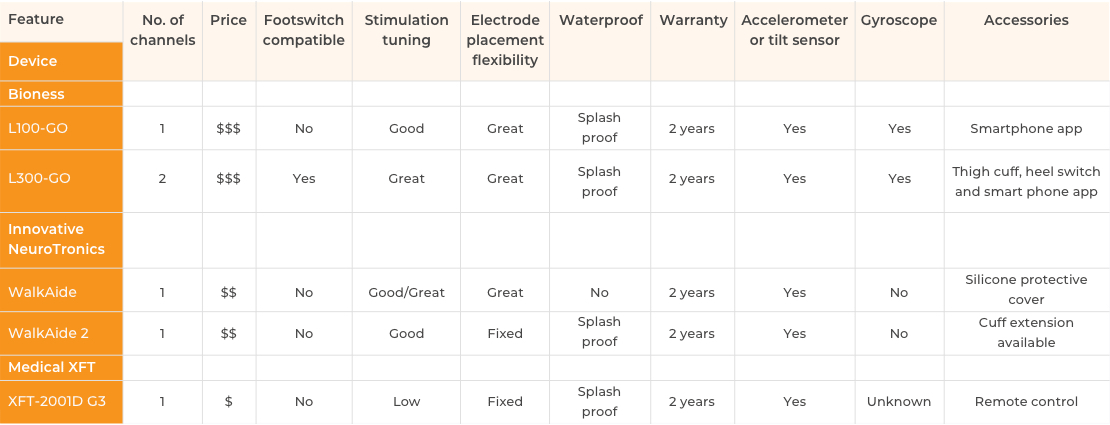
To summarise, cost aligns to options of fine tuning for specific individual requirements. The lower cost FES units are single channel and have limited options in adjustable settings. The higher end units provide more options for balancing strength of stimulation to different muscle groups. The most expensive offers multi-channel electrodes and detecting the position of the limb in space with gyroscopic technology.
WalkAide 2 and XFT G3 are single channel designs with no footplate option. Bioness L300-GO is currently the only multi-channel, meaning 4 electrodes instead of 2 in use to produce the most options to balance the stimulation of the 2 major muscle groups required for safe gait.
Accelerometer – a device to measure acceleration and tilt in a moving body.
Gyroscope – a device to measure or maintain orientation of a body in space.
Single channel – one electrical circuit or pathway.
Multi-channel – two channels, can be separated to be one for dorsi flexion and one for inversion/eversion.
Footplate or Footswitch – a sensor placed inside of a shoe to detect contact to the ground and feed back this data to a processor or Footswitch.
